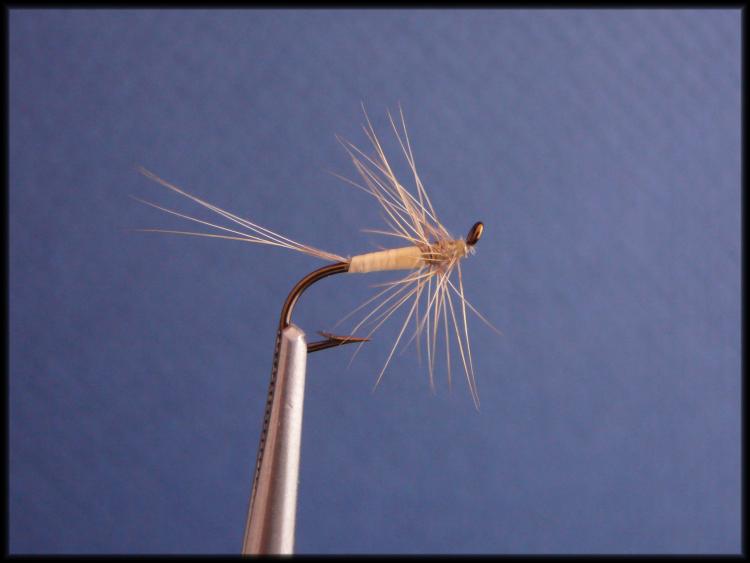After seeing a couple images of the original JL flies, I thought I would try to reproduce the fly as a way of understanding why JL would tie this fly and what he was thinking. How could it have been such a successful pattern for him to be included in his top twelve and what could it represent matching a particular hatch? I'm also curious to work out the best way to work the material and try to achieve the same overall appearance seen in the JL pattern. I tied dozens of flies trying to get the right effect. Please be patient with such an image heavy post, especially one that offers more questions than answers.
Pale Watery Dun Wingless - Jim Leisenring
Hook: 12, 13, 14
Silk: primrose yellow #3
Hackle: pale honey dun
Tail: pale honey dun cock fibers
Body: natural raffia grass, lacquer optional (it's a fly with a dried grass body, no rib and optional lacquer)
So to start, this is the fly I tied for the recent historic wingless wet swap hosted by Ray. This is tied with a thin length of the raffia tied in behind the hackle tie in point, wrapped carefully down toward the bend and back to the hackle. JL was not as concerned with creating a particularly smooth body and for some reason wasn't concerned with a taper based on the images of his own flies.
Pale Watery Dun Wingless - Lacquered
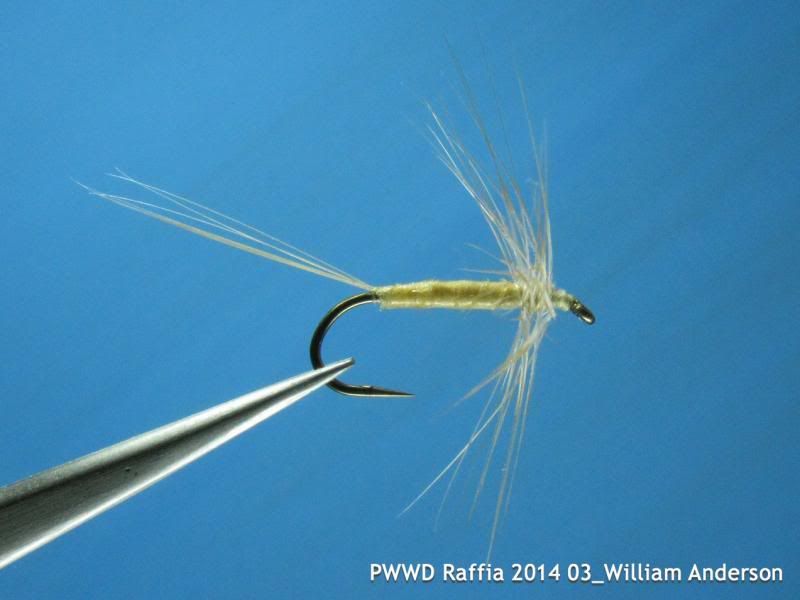
Many of you will recognize the card of raffia. I finally sourced some quality raffia from a weaver and the spool was enough to share. The technique requires flattening the length of raffia and slicing it lengthwise to about an 1/8th inch.
Raffia card and sliced length
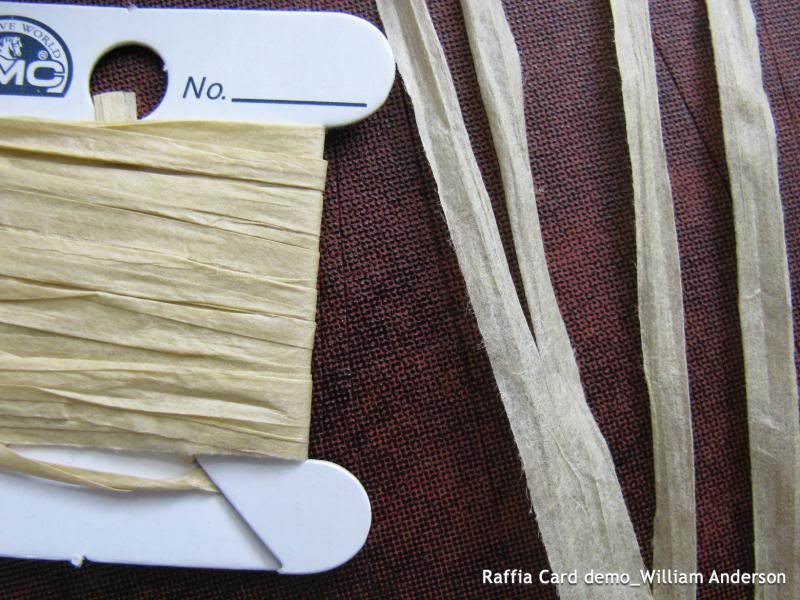
The fibers take on an interesting glow when wet, either from water or from the lacquer. It's attractive and when lacquered is actually pretty tough. If you wet the raffia you can see it's translucency, but if you wet it to make it easier to wrap, it'll pull apart every time, demonstrating the very poor strength of the material as a fly body, especially without a rib. For a man who put such emphasis on durability of the body, waxing and spinning bodies that are indestructible, this seems an odd choice. Like most all the other flies in his top twelve, this one too may have it's origins in the UK. John Shaner remarked that there were dry flies listed before JL in the UK which incorporated raffia as a body material.
Raffia with wet tips
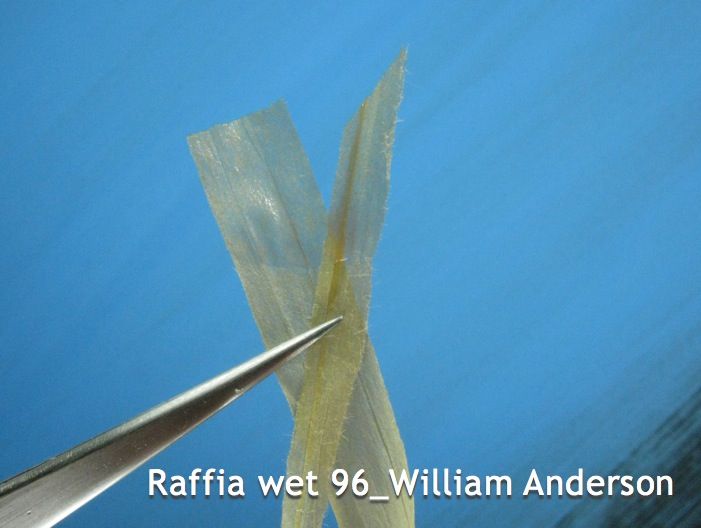
Below is a shot of the fly tied with the raffia without lacquer.
Pale Watery Dun Wingless - Dry
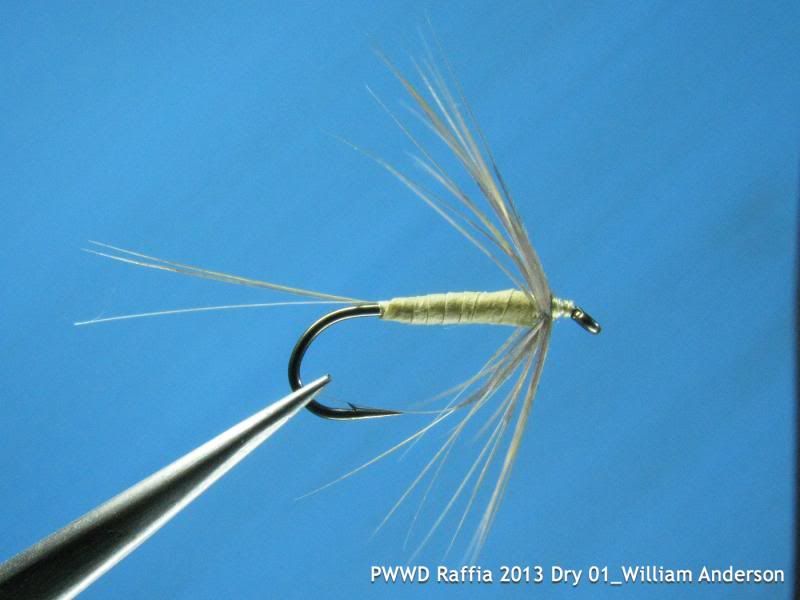
The most common reference to a sub for raffia regarding this fly is a Swiss Straw, which probably makes a productive fly, but is a long way from the results Leisenring intended. It's actually a very poor sub if you're interested in the fly from a historic perspective. It actually photographed okay, but when wet it doesn't darken or take on any of the attributes of the raffia.
Pale Watery Dun Wingless - Swiss Straw
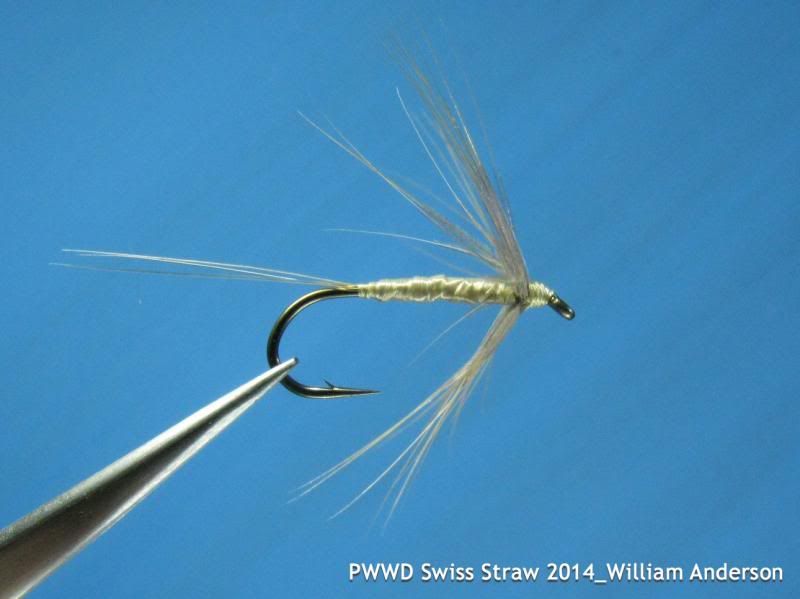
I also tied the fly using Primrose Straw Silk #2. This when wet approximates the original raffia much better than the Swiss Straw. I would be more likely to fish this fly than any of the others.
Pale Watery Dun Wingless - Pearsalls #2 Straw Silk
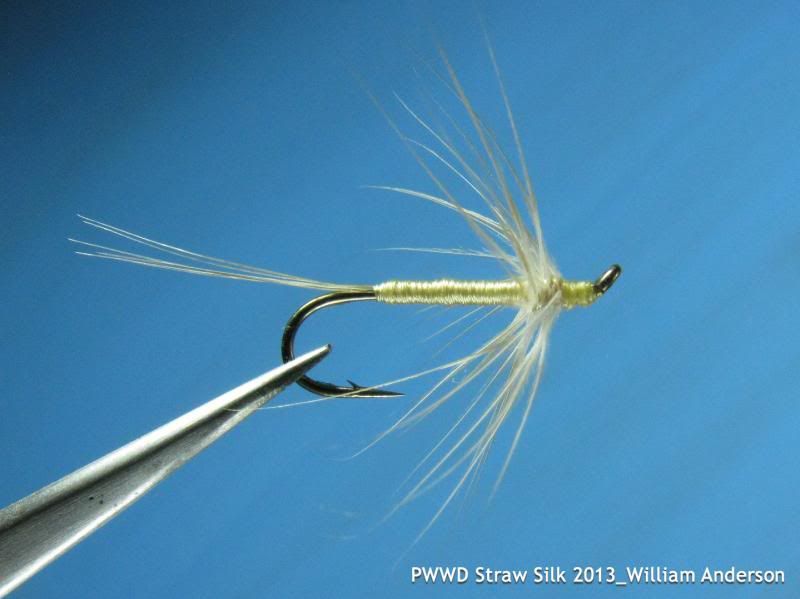
Another substitution attempt.
Pale Watery Dun Wingless - Honey Dun Hen Quill Body
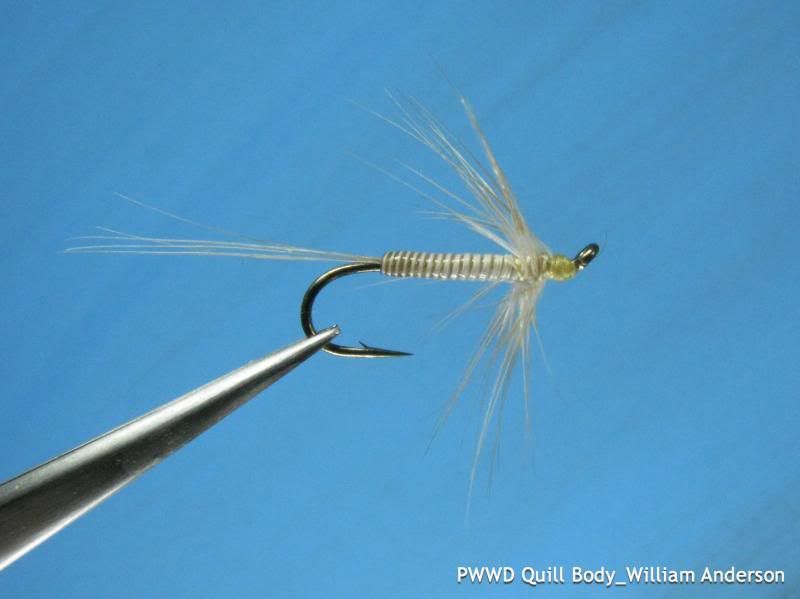
The last sub attempt.
Pale Watery Dun Wingless - DMC embroidery thread #738
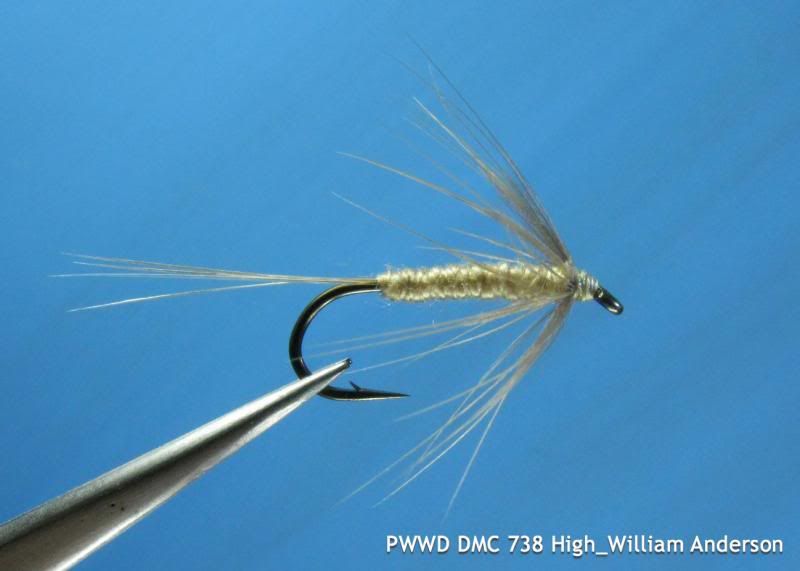
Any of these flies seem productive, although I have haven't fished any of them. The substitutes seem a distraction from the topic of understanding how the raffia fly rose to the top twelve status for Leisenring. As a generic attractor mayfly or spinner, it's interesting, but it would still seem one of the last flies I would think to fish, even for a Light Cahill hatch.
Any additional flies or information regarding the fly would be much appreciated.

